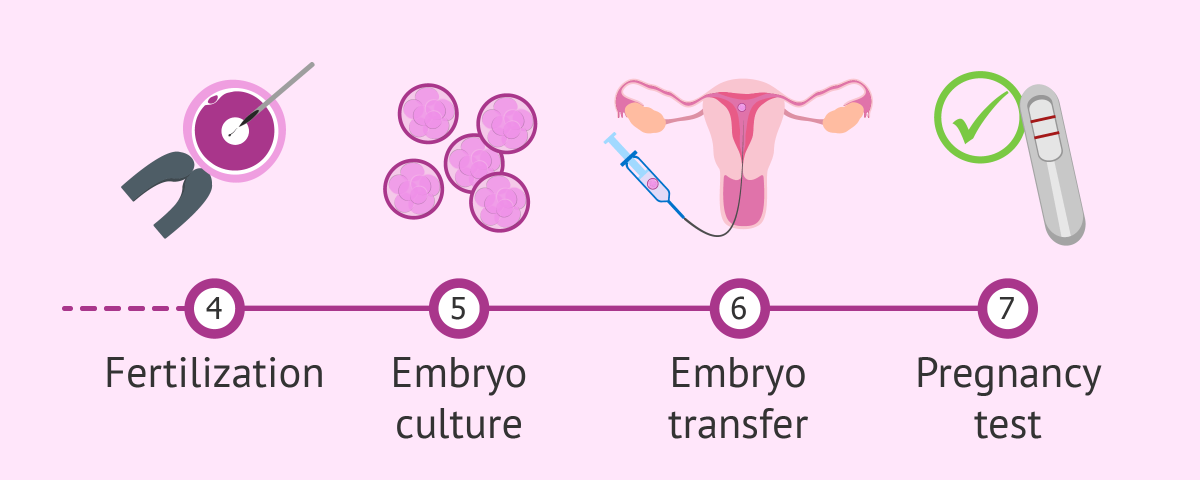
Why Did Alabama Stop IVF? The Full Story Behind the Controversy
April 16, 2025
What Does IVF Mean? Your Ultimate Guide to Understanding In Vitro Fertilization
April 16, 2025When Was IVF Developed? A Deep Dive into the History and Evolution of In Vitro Fertilization

When Was IVF Developed? A Deep Dive into the History and Evolution of In Vitro Fertilization
Imagine a world where starting a family isn’t limited by biology—a world where science steps in to make dreams come true. That’s the promise of in vitro fertilization, or IVF, a groundbreaking technology that’s changed millions of lives. But when did this incredible journey begin? How did IVF go from a wild idea to a household name? Buckle up, because we’re about to take a trip through time, exploring the fascinating story of IVF’s development, the pioneers who made it happen, and what it means for us today.
The Birth of a Big Idea: IVF’s Early Days
IVF didn’t just pop up overnight. It’s the result of decades of curiosity, experimentation, and a little bit of stubbornness. The story starts way back in the late 19th century, when scientists first began wondering if life could begin outside the body. In 1890, a British doctor named Walter Heape pulled off something incredible: he transferred an embryo from one rabbit to another, and it worked! A baby rabbit was born. This wasn’t IVF as we know it—there was no fertilization in a lab—but it planted a seed. Could science one day control the very start of life?
Fast forward to the 1930s. Two researchers, Gregory Pincus and Ernst Enzmann, decided to push the boundaries even further. They tried fertilizing rabbit eggs in a lab dish, a process we now call “in vitro” (Latin for “in glass”). Their experiment worked, sort of—the eggs started to develop, but the real magic happened inside the rabbit, not the lab. Still, it was a huge step. Scientists were beginning to see that fertilization didn’t have to happen naturally.
By the 1940s, things got even more exciting. Miriam Menkin, working with John Rock in the United States, became the first person to fertilize a human egg outside the body. In 1944, they watched as sperm and egg came together in a dish, creating the earliest spark of life. It was a breakthrough, but there was a catch: they couldn’t figure out how to keep that tiny embryo growing or implant it into a womb. The technology wasn’t there yet, and the world wasn’t quite ready either.
The Game-Changer: Louise Brown and the 1970s Revolution
The real turning point came decades later, in 1978, with the birth of Louise Brown—the world’s first “test-tube baby.” Born on July 25 in Oldham, England, Louise wasn’t just a baby; she was proof that IVF could work. Her arrival was the work of two brilliant minds: Dr. Patrick Steptoe, a gynecologist, and Dr. Robert Edwards, a physiologist. These two teamed up in the late 1960s, determined to crack the IVF puzzle.
Here’s how they did it. Steptoe had perfected a technique called laparoscopy, a way to peek inside the body with a tiny camera and retrieve eggs from the ovaries. Edwards, meanwhile, was a master at getting eggs and sperm to fertilize in the lab. Together, they spent years tinkering—over 100 attempts, in fact—before they got it right. They took eggs from Lesley Brown, Louise’s mom, fertilized them with her husband’s sperm, and then carefully placed the tiny embryo back into Lesley’s womb. Nine months later, history was made.
Louise’s birth wasn’t just a medical win; it was a cultural earthquake. Newspapers screamed headlines about “miracle babies” and “science fiction come to life.” Some people cheered, others worried—would this change what it means to be human? But for the Browns, it was simple: they just wanted a family, and IVF gave them one.
What Came Before 1978? The Unsung Heroes
While Steptoe and Edwards get the big applause, they didn’t start from scratch. Let’s rewind a bit and meet some of the lesser-known pioneers who paved the way.
- Min Chueh Chang (1950s): This scientist at the Worcester Foundation in Massachusetts showed that rabbit eggs fertilized in a lab could grow into healthy bunnies when implanted. His work in 1959 was a massive clue that IVF might work in humans too.
- Subhash Mukhopadhyay (1978): Just 67 days after Louise Brown’s birth, a baby girl named Durga was born in India, thanks to Dr. Mukhopadhyay. He worked alone, using basic tools and even a fridge to store embryos. Sadly, his government didn’t believe him, and he never got the credit he deserved during his lifetime.
- Carl Wood and the Monash Team (1973): In Australia, this group reported the first IVF pregnancy in humans. It didn’t last long—only a few days—but it showed the world that human eggs could be fertilized outside the body and start to grow.
These early efforts were like stepping stones. Each one brought us closer to that magical moment in 1978 when IVF went from “maybe” to “yes!”
How IVF Evolved: From One Baby to Millions
Since Louise Brown, IVF hasn’t just sat still—it’s grown up fast. In the 1980s, doctors figured out how to use hormones to get women to produce more eggs at once, boosting the odds of success. Then came tricks like freezing embryos, so couples could try again later without starting from scratch. By the 1990s, a new technique called ICSI (intracytoplasmic sperm injection) arrived, where a single sperm is injected right into an egg—perfect for men with low sperm counts.
Today, IVF is a global phenomenon. Over 8 million babies have been born through IVF worldwide, and in some countries, like Denmark, it accounts for 5% of all births. Success rates have soared too. Back in the early days, you had maybe a 5-10% chance of a baby per try. Now, if you’re under 35, it’s closer to 50%, thanks to better labs, smarter tools, and decades of practice.
But it’s not just about numbers. IVF has opened doors for all kinds of families—single parents, same-sex couples, people with genetic risks. It’s not perfect (it’s expensive, and it doesn’t always work), but it’s a lifeline for millions.
Quick Quiz: How Much Do You Know About IVF’s History?
Take a second to test yourself! Answer

